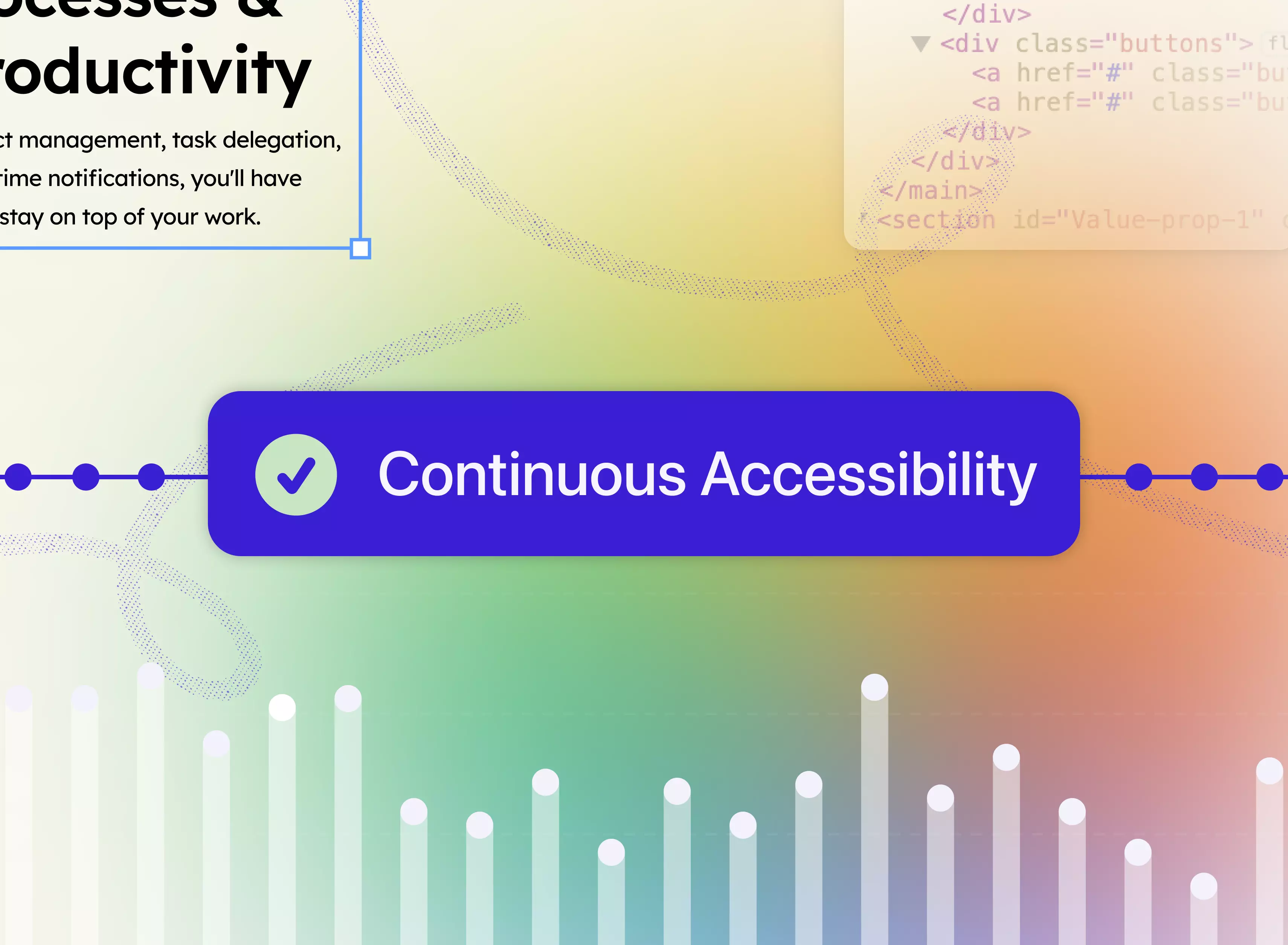Raising the bar for digital accessibility
Our CEO and Co-Founder Cat Noone on the concept of Continuous Accessibility, how it’s transformative for digital accessibility, and why it’s at the center of Stark’s roadmap.

Cat Noone
Jun 06, 2023

Around here at Stark, we often find ourselves immersed in conversations about the importance of making “progress, not perfection.” Lately, I’ve been thinking about the dynamics that drive progress. I’m talking about the small, incremental steps that lead to massive non-incremental change. “Progress, not perfection” is about driving forward lots and lots of small changes every day and that adds up to real, big change.
Interestingly, progress is both a noun and a verb. As a noun, it refers to “forward or onward movement toward a destination.” As a verb, it means “to move forward in space or time.” The Stark team thinks about accessibility as both a destination and the actions that get us there. We're moving toward an exciting, important, achievable destination: an accessible digital world. And as we move forward, we get closer, we improve all along, and we make progress…even if it’s incremental. (Actually, especially if it’s incremental!).
People have been laying the groundwork for digital accessibility for decades. Advocates have rallied, standards were set, and customers have spoken up. Along this journey, we all progressed. We inched closer, evolved, and improved—faster and faster. But, admittedly, systems change at any large scale is hard. And humans are complex. Our journey toward accessibility has been even more challenging because the tools needed to fulfill these visions didn’t exist until very recently.
What excites me most about where we are today and where the industry is headed is that Stark’s roadmap is poised to transform the world of accessibility. At the heart of our plan is a game-changing concept that’s centered around the idea of Continuous Accessibility.
Today’s entire software landscape is driven by a “continuous” mindset. Teams build for CI/CD— continuous integration/continuous deployment—because that ensures an uninterrupted stream of product updates. On a parallel note, continuous monitoring ensures that around-the-clock protections are in place against security vulnerabilities and threats. In the same vein, we’re building an accessibility engine to power continuous accessibility. We want companies to ensure that accessibility checks are embedded into every step of the development process, from crafting designs to writing code, from shipping products to creating social graphics. The next evolution of software design and development is CI/CD/CA, where continuous accessibility joins the mix of processes that are part of the everyday workflow.
This continuous accessibility mindset can raise the bar for what we expect accessibility to be. While continuous accessibility is a phrase that goes back a couple of decades, it has lagged in implementation. We’re encouraged by newer POV’s like this one from Melanie Sumner, who’s talked about continuous accessibility in the developer community. Importantly, we want organizations to see that continuous accessibility is an approach that can be implemented by companies of all sizes—from Fortune 100 global enterprises to local pizza shops.
The need for a scalable, enjoyable, and user-friendly solution is colossal. Why? Because, shockingly, 98% of the internet remains inaccessible today. In an era where we’ve accomplished extraordinary feats like landing objects on Mars and revolutionizing artificial intelligence, it’s a travesty that billions of disabled individuals are unable to access the latest digital innovations. This is not only unacceptable, but it’s also detrimental to our collective economy and society as a whole.
How did we arrive here? For decades, websites and apps were either built with no consideration for accessibility, vague promises of rectifying the issue someday, or they were retrofitted with inadequate solutions that failed to keep pace with digital growth. Another misguided approach involved overlays, which are like a bandaid on a deep wound that needed surgical intervention. Overlays end up misleading companies into believing they’re doing the right thing, but they actually exacerbate accessibility problems.
I understand the predicament around why it’s been slow for some companies to implement accessibility. That’s why we established Stark. Designers and developers need a solution that matches the speed of modern-day software development. They need a fresh set of solutions that can seamlessly integrate with existing design and coding systems, scale effortlessly, and cater to individuals with diverse disabilities.
In the United States, the Americans with Disabilities Act (ADA) requires all public spaces to have certain accessibility assistance in places like elevators, braille, and wheelchair ramps. While these improvements to our physical spaces certainly benefit everyone, they’re specifically in place because it ensures the environment itself doesn’t disable the individual from navigating it as efficiently as someone without the shared disability.
What about digital spaces though? We now live in a world that is always on and that’s largely digital, so the ability to navigate digital environments in an independent, delightful, and easy way is equally as much a human right for disabled people. Continuous accessibility means continual access to information and services for everything you find online, from banking to healthcare to education. When accessibility is done right, it has a huge impact on people’s lives and allows everyone to participate in society and live more independently.
Not only is accessibility a human right, the numbers show that there is a clear business case for businesses to embrace it. By making websites and apps accessible, businesses can reach a wider audience, increase sales, and reduce their risk of legal liability.
Billions of people across the globe require accessibility as a means to navigate the world. Whether they live with a disability themselves, be it permanent (like a limb amputation) or temporary (like a broken arm), or they have loved ones who experience this, everyone deserves an equitable and accessible digital world.
Continuous Accessibility with the makers of tomorrow ensures this.